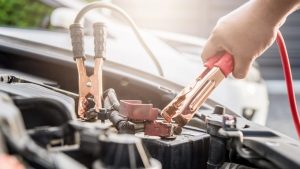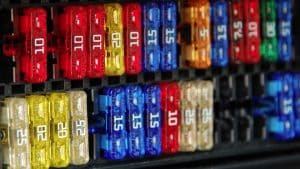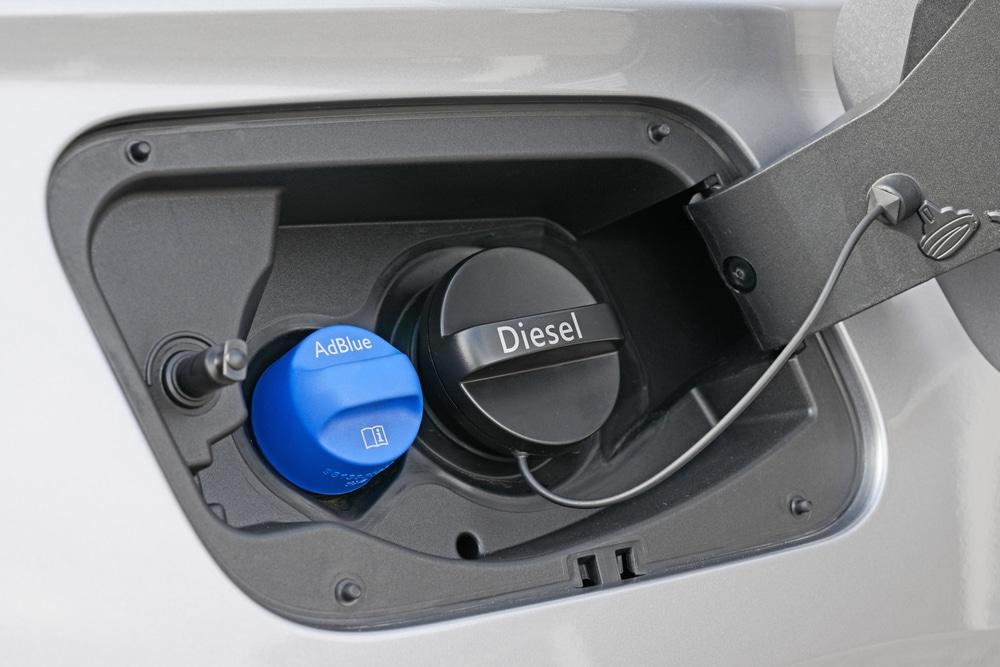Have you ever experienced the frustration of getting into your car, turning the key, and nothing happens?
It’s a common occurrence that can be incredibly inconvenient, causing delays and disruptions to your daily plans. Not to mention the added stress of not knowing what the problem is or how to fix it.
At Quality Car Service, we understand the hassle of a non-starting car, which is why we’re here to help. But before giving us a call, there are a few things you can do yourself to try and pinpoint the issue.
While your car may be a complex engineering marvel, with a little bit of troubleshooting, you may be able to get it up and running again in no time.

Six steps you can take to troubleshoot your car when it fails to start:
- Check the battery: Make sure the battery is fully charged and properly connected.
- Check the fuel level and fuel type: If the fuel tank is empty, the car won’t start. Also make sure you have the correct fuel in your vehicle.
- Check the starting process for your vehicle: Automatic cars being left in gear and not in Park or Neutral won’t start. Most newer vehicles with a manual gearbox will require you to depress the clutch prior to starting the vehicle. Check the manufacturer handbook if you are not sure. If you drive an electric vehicle and it still has the charging cable attached, the vehicle won’t start.
- Check your key: We know it sounds obvious but we’ve seen this one quite a few times! Using the wrong key which hasn’t been programmed to the vehicle will result in the vehicle not starting.
- Check warning lights: Look for a Malfunction Indicator Lamp indicating an electronic system fault.
- Take note of any unusual sounds or behaviours: These could provide important clues about the cause of the problem and help us diagnose the issue more quickly.
Check your Battery
If your car won’t start, the battery is often the first thing to check. Here are some ways to determine if the battery is causing the issue:
- Check the battery’s voltage: Use a digital multimeter to check the battery’s voltage. A reading below 12.4 volts could indicate a dead or weak battery that needs recharging or replacement.
- Check for corrosion: Corroded battery terminals or cables may not provide a good connection and could be the source of starting problems.
- Inspect the terminals and cables: Ensure the battery’s terminals and cables are clean and securely connected. Dirty or loose connections can affect the battery’s performance.
- Check the headlights and wipers: If the headlights are dim or don’t work, or the windscreen wipers move slowly or not at all, it may indicate a weak or dead battery.
- Try jump-starting the car: If the car starts with a jump-start but won’t start on its own, it may be a battery issue or part of a larger problem. See below for more information on how to jump-start your car.
- Listen for the starter: If you turn the key and don’t hear the starter engaging, it could be due to a weak or dead battery.
If you’re experiencing any of these issues, it’s recommended to have your battery checked by a professional such as Quality Car Service to determine if it needs to be replaced. By checking your battery and performing regular maintenance, you can avoid the inconvenience of a non-starting car.
If you’ve identified that your car battery is flat, there are a few things you can do to get back on the road:
- Charge the battery:
- Check compatibility: Ensure the battery you want to charge is compatible with the charger you’re using. Some chargers are only designed for certain types of batteries.
- Connect the charger to the battery: Connect the charger’s clips to the battery’s terminals, ensuring that the positive clip is connected to the positive terminal, and the negative clip is connected to the negative terminal. The clips may be alligator clips or ring terminals that attach to the battery terminals using nuts and bolts.
- Turn on the charger: Follow the manufacturer’s instructions for charging the battery, as charging rates and time can vary depending on the charger. Some chargers may have a built-in display that shows the charging progress and voltage level.
- Let the battery charge: Allow the charger to run until the battery is fully charged. The charging time can vary depending on the battery’s size and the charger’s charging rate. This may take several hours.
- Turn off the charger and disconnect it: Once the battery is fully charged, turn off the charger and disconnect it from the battery. Ensure that you remove the clips in the reverse order of how they were connected, starting with the negative clip, to avoid short circuits.
When using a battery charger, it’s crucial to follow the manufacturer’s instructions carefully, as improper use can damage either the battery or the charger itself. If you’re unsure about how to use the charger, it’s recommended to consult the manual or seek the assistance of Quality Car Service. It’s always better to be safe than sorry when it comes to handling electrical equipment like a battery charger.
- Jump-start your vehicle: Jump starting a car is a simple process that can be done with a set of jump leads and another car with a good battery. Here’s how:
- Position the cars: Park the car with the good battery close to the car with the dead battery, but ensure they don’t touch.
- Turn off both cars and engage the parking brakes.
- Connect the red jump leads: Connect one end of the red jump leads to the positive terminal of the dead battery, and the other end to the positive terminal of the good battery.
- Connect the black jump leads: Connect one end of the black jump lead to the negative terminal of the good battery, and the other end to a metal surface on the car with the dead battery, such as a bolt on the engine block.
- Start the good car: Start the car with the good battery and let it run for a few minutes.
- Start the dead car: Attempt to start the car with the dead battery. If it starts, remove the cables in the reverse order that you attached them (black, then red).
- Contact a professional if needed: If the car still won’t start, there may be a problem other than the battery. In this case, it’s a good idea to call a professional such as Quality Car Service for assistance.
When jump-starting a car, it’s crucial to ensure that the cables are correctly connected, and the ends do not touch each other or any metal surface. Doing so can cause sparks, which can potentially damage the cars or the batteries. Therefore, it’s important to take extra care and follow the correct steps when connecting the cables to avoid any accidents or further damage to the vehicles. If you’re not confident in your abilities, it’s best to seek professional help of Quality Car Service to avoid any accidents or further damage to your vehicle

One Final Thing To Check
In addition to the previous mentioned reasons, a blown fuse can also be the cause of a car not starting. Fuses are essential to protect the car’s electrical system from damage caused by excess current, and if one blows, it can disrupt the electricity flow and prevent the car from starting.
A blown fuse can affect different systems in the car, such as the fuel pump, starter, or ignition switch. To check for a blown fuse, you can locate the fuse panel, usually located under the dashboard or in the engine compartment, and find the diagram showing the location of each fuse and its corresponding circuit.

You can check the fuses visually or with a multimeter. If you find a blown fuse, it’s essential to replace it with a new one of the same amperage rating.
If you’re unsure how to check or replace the fuses, it’s recommended to seek assistance from a professional such as Quality Car Service to ensure the job is done safely and correctly. By addressing any blown fuses, you can ensure that your car’s electrical systems are functioning correctly, and your vehicle will start when needed.
In Summary
A car not starting can be frustrating and inconvenient, but by performing some simple checks, you may be able to diagnose and fix the problem yourself.
Checking the battery, fuel level, and fuel type, and the starting process for your vehicle, can help determine the issue.
If your battery is flat, you can charge it or jump-start your car, but it’s essential to follow the manufacturer’s instructions and take precautions to avoid damaging the battery or the car.
Checking for blown fuses is also crucial, as they can interrupt the electricity flow and prevent the car from starting.
By following these steps or seeking the help of a professional like Quality Car Service, you can avoid the inconvenience of a non-starting car and ensure that your vehicle is safe and ready to go when you need it.
If you’ve checked all of the possible causes of a non-starting car and still can’t get it running, don’t hesitate to reach out to Quality Car Service at 01908 418497.
Our team of professionals is always available to provide assistance and ensure that your vehicle is safe and functioning correctly. Don’t let a non-starting car ruin your day – call Quality Car Service for reliable help and guidance.



